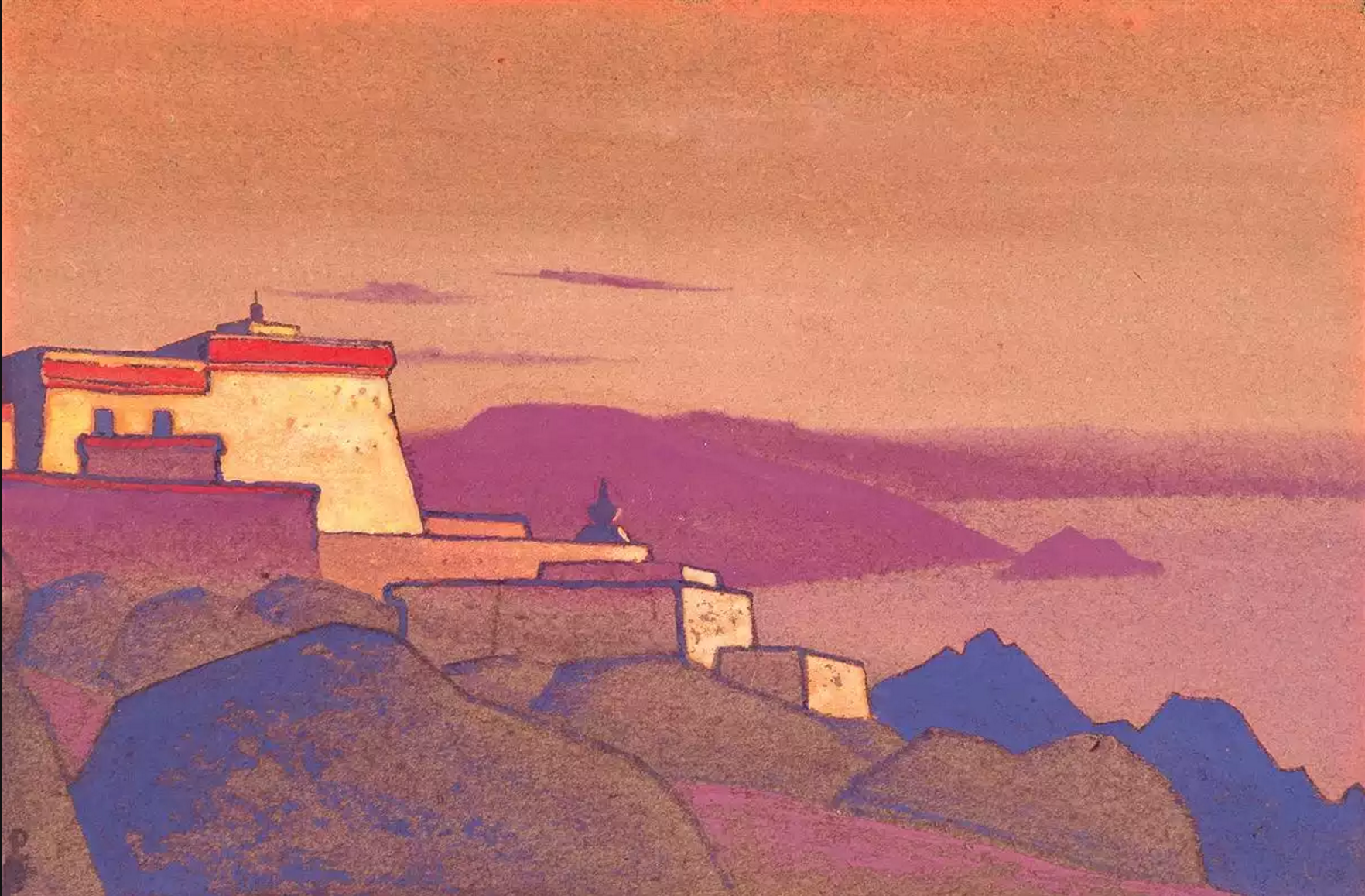The Gelug monastery portrayal and the Gelug Sect

Ganden Namgyeling is one of the three major Gelug monasteries of Tibet which also as universities for these sects of Buddhism. Ganden means ‘joyous’ in Tibetan. This particular monastery is located in Dagze County east of the Lhasa city limits. There are two other Gelug monasteries titled the Sera Monastery and Drepung Monastery. This particular monastery was built about 600 years before by the founder of the Gelug sect of Tibetan Buddhism.
The depiction of a “Gelugpa Monastery” left behind by Nicholas Roerich before he left this world tells the story of a mountain top place of worship with a sea of fog hanging (most likely the surrounding Kyi-chu Valley) in the plateaus below, quiet, resolute yet peacefully standing atop the stones. Although it is difficult to confirm whether this portrayal was of the Ganden complex or of one of the other facilities that supported the Gelug practices. The painting approximately dates to 1936 and at present is on exhibition in the Nicholas Roerich museum in Nicholas Roerich Museum in New York City.
During Roerich’s journey through Tibet in the pre World War II era was not at all merely a venture into the landscapes of a lost holy land at the top of the world. He learned much about the culture and inner workings. In example, he described in his diary some of the features within monastery lives regarding documents stating “Near Ghum stands a high rock. It is said that on its peak is lying a significant prophecy. In each stupa are enclosed significant objects. It is wrong to think that the bookshelves displayed in temples to some travelers comprise the entire book treasures of the monastery. Besides these official volumes of teachings everywhere in the secret recesses of the abbot there are manuscripts of unusual interest. One thing is dangerous. Often these hidden places are harmed by dampness, or mice, or are simply forgotten during some hasty evacuation. Often a lama will tell you: “I have written down the prophecies but I do not carry them with me. They are lying under a stone.” Then some unexpected event happens; the lama hastens to put his sack on his back and departs; and the invaluable manuscripts are lost.” It is evident from his diary that his interactions with lamas were extensive and in-depth.
You can learn from the information left in these diaries many valuable suggestions for your own journey to Tibet: look into the details of the architecture, ask people historical questions about how the culture evolved. Where possible look at old prints as well as re-prints of ancient texts.
New chapels and quarters for stay are being built all the time making it difficult to keep an up to date description of the visiting procedures are route. If you are interesting in documenting your visit, current photography of the inside of the complex is ¥20 per chapel; while video fees are significantly higher (¥1500). It is advised to visit in the early day as many complexes will close during the afternoon and evening hours. If you are in the area for a sequential trek, Ganden is also the point of departure for a popular wilderness trek to the Samye Monastery.
Your Comment
Name E-mailRelated News
-
;
Based in Lhasa, Tibet Vista is a Tibet travel agency that specialized in Tibet permit, and Tibet tours for both private and group travelers at a local price!
•4 Days Lhasa City Group Tour from USD 460 •8 Days Everest Base Camp Group Tour from USD 850 •15 Days Mt.Kailash Group Tour from USD 1780 •2016 Tibet Train Tours from Beijing, Shanghai, Chengdu, Xining,etc










